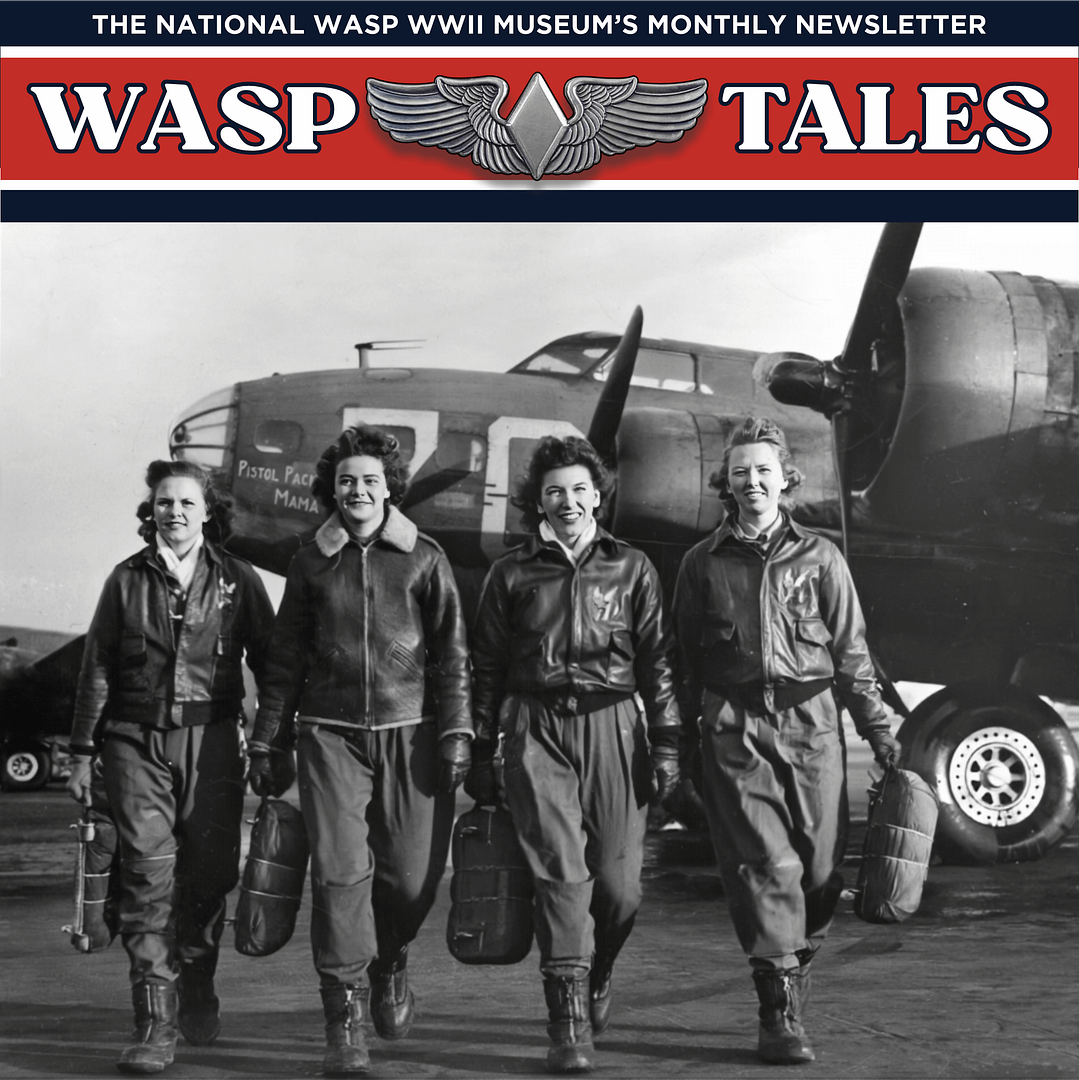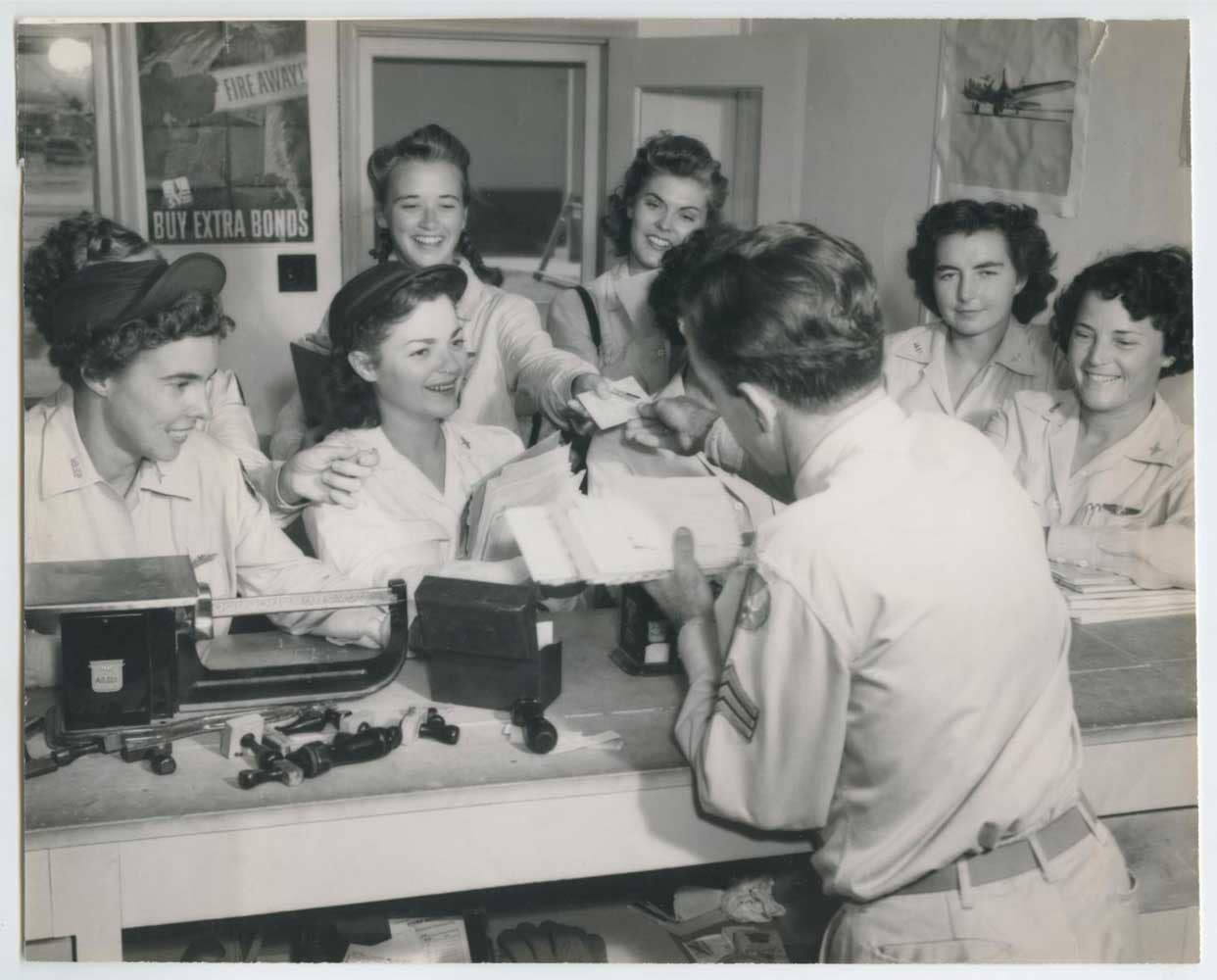By the end of their service in December 1944, the WASP assigned to the Air Transport Command (ATC) flew 12,650 ferrying missions, equating to 9,224,000 miles flown in operation. But out of the 1,102 WASP who flew some 78 different types of aircraft for the U.S. Army Air Forces during their service, approximately three-quarters of WASP were pilots for the Air Training Command and were stationed for duty at over 120 U.S. Army Air Forces bases and airfields across the nation.
Under the leadership of WAFS founder, Nancy Love, designated as WASP Executive of the Ferrying Division of the ATC, the concept for the women attached to the ATC was to ferry, or transport, military aircraft from airbase to airbase, or factory to port/point of embarkation for shipment overseas.
Jacqueline Cochran’s concept for the use of women pilots was painted with a broader brush. Her belief was that women could, and would, perform a whole variety of flying duties on the home front in order to relieve male pilots for overseas duty. Cochran, herself referred to them as ‘’dishwashing jobs’’. In the Fifinella Gazette dated March 1, 1943, she said, “At the start of the war, I became convinced that there was a sound, beneficial place for women in the air; not to compete with or displace the men pilots, but to supplement them.” Hence, upon graduation from the WFTD (Women’s Flying Training Detachment), Jackie’s idea was that women should be given transition up to their capabilities, in all types of military aircraft, and in all capacities… in addition to ferrying.

So, beside the WASP assigned to the Air Transport Command, the WASP assigned to the Air Training Command performed duties that included flight training, cargo delivery, check and staff piloting, glider towing, smoke laying, weather missions, instrument safety, engineer/test flights, bombing range runs, administrative & utility flights, calibrated missions, anti-aircraft tow targets, radio-controlled (drone) aircraft, radar deception, tracking and searchlight missions, simulated strafing, experimental test flights, and the first experimental jet.
The breadth of flying duties carried out by the WASP assigned to the Training Command were extensive and accomplished at airbases and airfields across the United States! A few of them included: Alamogordo

AAB, New Mexico, where WASP flew B-17s as co-pilots, did flight checks, carried cargo in C-47s, flew UCs as utility pilots, L-5s on search missions, and cargo deliveries. At Blackland AAF in Waco, Texas, WASP performed engineering/test/maintenance flights; utility in the AT-10. At Camp Davis AAF, North Carolina anti-aircraft artillery school they flew at 1400’ for anti-aircraft tracking guns; towed targets at different altitudes for live fire from 90mm guns, and night target-towing. Eagle Pass AAB, Texas was an advanced gunnery school where they flew the AT-6 and P-19. At Goodfellow AAF, San Angelo, Texas they provided instrument instruction in the AT-6 and BT-13. At Maxwell Field, Montgomery, Alabama, a B-24 repair depot, WASP co-piloted and ‘’slow-timed’’ rebuilt or new engines to break them in. At Muroc Lake, California, WASP were assigned to demonstrate radio-controlling PQ-8 carrying a bomb. San Marcos AAB, Texas was a navigation school where WASP flew as staff pilots and copilots on training flights. La Junta AAF, Colorado was a B-25 pilot transition school where the WASP flew the BT-13; AT-6, and B-25 as copilot utility/administrative pilots. Lockbourne AAB, Columbus, Ohio was a B-17 school where WASP were assigned, at Otis AAB in Falmouth, Massachusetts, WASP duties were carried out in the PQ-8; PQ-14, and C-45 as radio-controlled target drones, at Greenville AAB, Mississippi, WASP served as utility, administrative, engineering pilots and at Wright Field, Dayton, Ohio, WASP flew the AT-6, L-5, BT-13, UC-78 and co-piloted on the B-17, B-25, C-47, A-25, and there WASP Ann Baumgartner was the first woman to fly a jet.

Given that these are only a handful of the 120 bases that the WASP served at, whether they were assigned to the Air Training Command or the Air Transport Command, the WASP logged 60,000,000 miles and flew every airplane in the AAF arsenal, in every capacity, except combat. They did it all… and as is said, their mission was accomplished!

Written by: Julia Lauria-Blum
Photos courtesy of: the National WASP WWII Museum | Archives
About Julia Lauria-Blum:
Julia Lauria-Blum earned a degree in the Visual Arts at SUNY New Paltz. An early interest in women aviation pioneers led her to research the Women Airforce Service Pilots of WWII. In 2001 she curated the permanent WASP exhibit at the American Airpower Museum (AAM) in Farmingdale, NY, and later curated ‘Women Who Brought the War Home, Women War Correspondents, WWII’ at the AAM. She is the former curatorial assistant & collections registrar at the Cradle of Aviation Museum on Long Island and is currently editor-in-chief for Metropolitan Airport News.
Julia is the proud mother of two daughters and a rescued Boxer. Her many interests include swimming, painting, traveling, aviation history, cooking, and storytelling.


